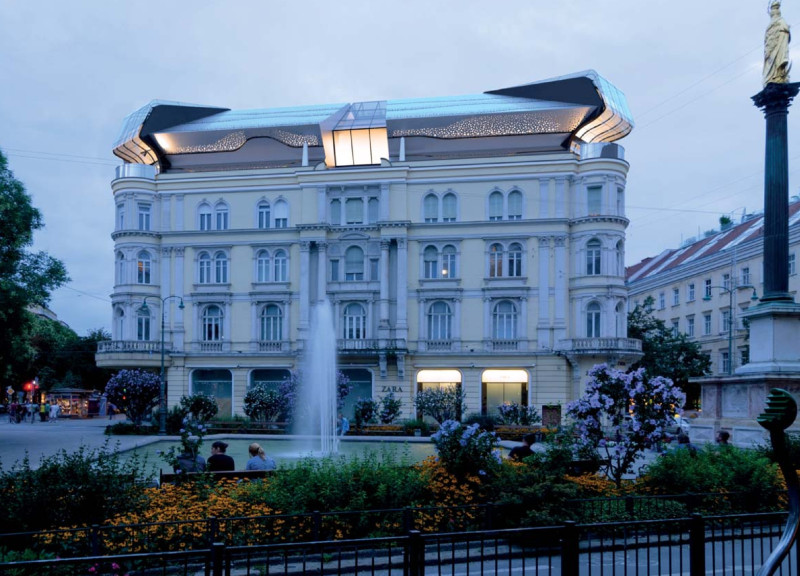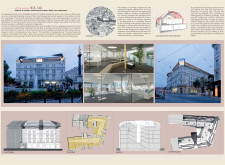5 key facts about this project
### Overview
The Office Center E.T. 1.0 is located in Graz, Austria, and represents a strategic architectural intervention aimed at integrating contemporary design with the historical context of the site. The project reinterprets an existing historic building in a highly frequented public space, enhancing urban vibrancy while ensuring modern functionality. The key focus is on contextualizing new elements that respect heritage and contribute to the overall urban experience.
### Conceptual Framework
The design framework emphasizes a respectful dialogue between historical and contemporary architectural elements. The new rooftop extension serves as a bridge, artistically linking the traditional aspects of the original structure to modern design principles. This extension is characterized by its distinctive form and use of contemporary materials, which interact dynamically with the existing building. The office workspace has been reconfigured to maximize both functionality and aesthetic appeal, fostering an environment conducive to collaboration while acknowledging and amplifying the site's historic character.
### Materiality and Sustainability
A diverse palette of materials is employed throughout the project, each chosen to reflect both the historical roots and the demands of modern technology. Glass is extensively used in the façade and interiors to enhance transparency and natural light. The metal roofing contributes durability and contemporary aesthetics, while special solar panels integrated into the design support energy efficiency, aligning with sustainable building practices. Concrete provides structural stability, enabling the new additions, while decorative materials are selected to connect visually with the original architecture.
The design of the Office Center E.T. 1.0 prioritizes sustainability and community engagement, illustrating a commitment to reducing the carbon footprint through innovative adaptations. The juxtaposition of modern and historic styles facilitates a cultural dialogue, inviting interaction among users and enhancing the surrounding urban fabric. The project exemplifies adaptive reuse principles, successfully transforming an existing structure into a functional and engaging modern workspace.



















































